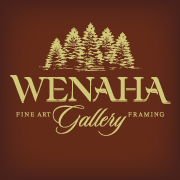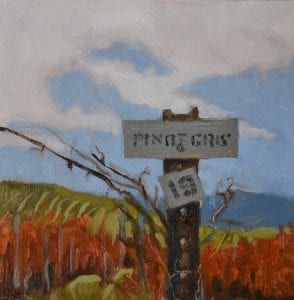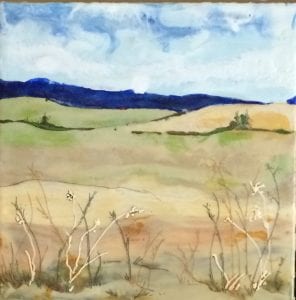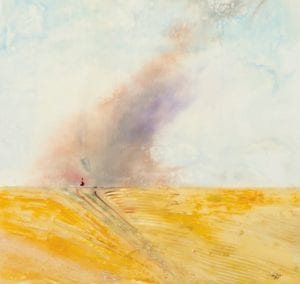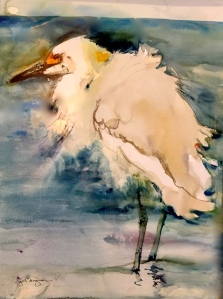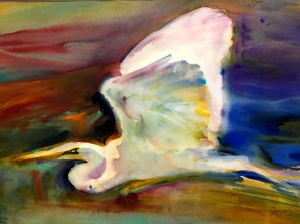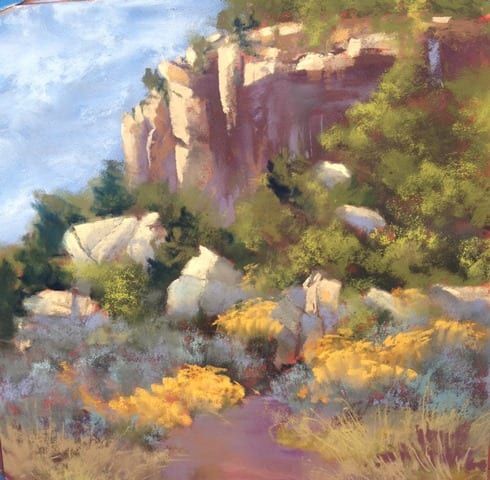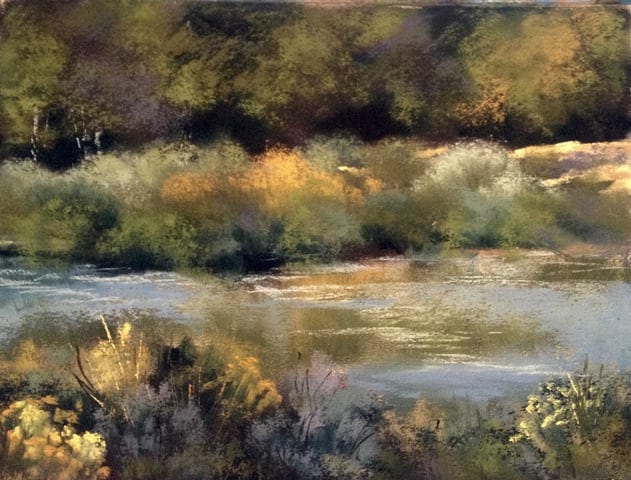Painterly Photography — Fine Art Photographs by Barb Thrall
Whoever coined the axiom, “The camera cannot lie,” probably didn’t believe it himself, because photo editing and manipulation have been around almost as long as photography. One of U.S. history’s most iconic photographs, that of a full-length Abraham Lincoln standing with one hand resting against his vest, is actually an 1860s composite of the president’s head set atop another man’s body.1
“There is an idea that all photography must be realism — that if anything is manipulated in Photoshop then the photographer is cheating,” says Barb Thrall, a Kennewick artist who creates photographic fine art images incorporating her intellect and skill, digital camera, judicious use of Photoshop and Lightroom, and a wise selection of paper.
“In the same breath,” Thrall continues, “people will mention Ansel Adams or any other famous landscape photographer — but taking the photo is only half of the creative process for these photographers. The other half occurs in the darkroom or in Photoshop or whatever process they are using to get their photos to the printer.”
Painterly Photography
In other words, not all photography is the same, just as not all painting styles are the same. It’s one thing when the photo is on the front page of the newspaper, purporting to accurately represent an actual event, and a totally different element when the photo is an art piece, with keen attention to color, subject matter, perspective, layout, and, as Thrall describes it, connecting the viewer with a visceral or “gut” feeling in the soul.
“The editing I do, while certainly giving the photos a painterly feel, is more about experience,” Thrall explains. “How can I translate the feeling of a moment into a photo?” For Thrall, this involves not only the initial capture of the image, but the processing of it afterwards, which in earlier years took place in a traditional darkroom, but now involves photo software allowing the artist to work with light, texture, shadow, shading, and more. Also involved is compositing, the merging of one or more separate images into one.
Photography Mimicking the Old Masters
“There is a certain subtlety to processing photos this way,” Thrall says. “I love the photography that mimics the Old Masters — there is an elegance and romance to this.” And while there are diehards who insist that “a photo should be a photo” and “a painting should be a painting,” the play between painting and photography has been around as long as there have been cameras, Thrall explains.
“Anyone who takes their photos straight out of a camera and doesn’t process them is doing themselves a disservice. Ansel Adams was a great photographer, but he was a master in the darkroom.”
Thrall has had a camera in her hand from childhood, starting with a Kodak 110 cartridge and working her way through various models as she has shot images of landscapes, floral still lifes, portraiture, and black and white flora macro images with a graphic abstract feel. Vindication of her artistic passion came from, of all places, the State of Washington and its pre-college personality test that Thrall took in high school. The top jobs recommended for Thrall were photography and wildlife biology.
Interior Design, Paralegalism, and Fine Art Photography
And in what did Thrall receive her degrees? Interior design and paralegal studies, neither of which were in the top ten career choices on her test results. But because passion frequently trumps practicality, Thrall incorporates both interior design and paralegal principles into her photography.
“Color theory and the theory of thirds are certainly part of an interior design education, and a paralegal ought to be good with details.” A recent interest in architectural photography is “nothing but details.” The combination of those details with the love of the Old Painting Masters results in a lot of breaking of the rules, and advancement in technique.
“One of the biggest influences in my work is Vermeer. I love that light — truly, truly love that light.”
Capturing Attention
Thrall has shown her work in juried shows throughout the Pacific Northwest, with one of her pieces in the permanent collection at Larson Gallery in Yakima. She takes a workshop every year in a different aspect of photography, and has studied under Ray Pfortner — who worked under wildlife photographer Art Wolfe — and received a photography certificate from the Rocky Mountain School of Photography, whose founder studied under Ansel Adams.
A finished work, for Thrall, starts in the field and ends with an image that captures the attention, the eye, and the soul.
“I want people to just slow down a bit, to breathe in and out.
“One of the series that I did focused on just shooting at rest stops or in places very close to the I-90 Freeway. I wanted to show the beauty in places not that far off the road.
“We don’t have to go very far to see beautiful places.”
Barb Thrall is the featured Pacific Northwest artist at Wenaha Gallery from Monday, October 23 through Saturday, November 18, 2017.
Contact the gallery, located at 219 East Main Street, Dayton, WA, by phone at 509.382.2124 or e-mail art@wenaha.com. Gallery hours are 9 a.m. to 6 p.m. from Monday through Saturday, and by appointment. Visit the Wenaha Gallery website online at www.wenaha.com.
1McKay, Katie. “Photo Manipulation Throughout History: A Timeline.” Ethics in Photo Editing: WordPress, April 1, 2009.







